Welcome to the August edition of our Tech Q&A, where we aim to answer your questions, tapping into our unparalleled access to the greatest minds in cycling – both on the BikeRadar staff and externally.
Senior technical editors Tom Marvin and Warren Rossiter sat down with technical writers Luke Marshall and Oscar Huckle to answer your questions.
For this edition, we received questions on getting the right dropper length, whether non-SRAM UDH equipped frames can be converted and replacing a fork with an aftermarket option.
As ever, if you have a question you can’t find the answer to, email us at podcast@bikeradar.com. We’ll select the most interesting questions every month and bring you an expert response.
Getting the right dropper length
Simon asks…

How can I determine the most drop from a dropper post I can fit in my frame? There seems to be a wide range of drop lengths available and I want to get the most possible out of my 2021 Giant Trance.
BikeRadar’s answer…

Gravity-focused maestro Luke Marshall says there are short and long answers to this question. The short answer is you can take a look at a few dropper-post calculators online, such as those offered by OneUp Components and PNW.
But you’re going to need a few measurements anyway, so we’ll take you through the long answer.
We assume you’re going to keep your saddle, so we don’t need to worry about determining the saddle stack height (the distance between the bottom of the dropper’s seat collar and the post’s saddle rails).
But we need to figure out the ride height – how far the rails of the saddles are above the seat tube clamp. You can get this figure by using a tape measure.
When choosing a dropper post, you need to be careful that the post’s extended length isn’t longer than the ride height. Otherwise, the saddle height’s going to be too high and your feet won’t be able to reach the pedals properly.
You also need to determine the insertion depth. Depending on the model of Giant Trance you have, the 2021 Trance (not the Trance X) has a pivot for the rocker that goes through the seat tube, which is a limiting factor on insertion depth. Conversely, this isn’t an issue on the Trance X.

Remove the seatpost and measure the insertion depth. The easiest way to do this is to remove the dropper post lever from the bar, but leave the cable intact.
Undo the seatpost clamp and pull the dropper seatpost up so you’re not stretching anything.
Once the seatpost is out of the frame, grab a tape measure and slide it into the seat tube and extend it until it hits its first obstruction. That will probably be the pivot on this Trance, but it might be a bottle cage bolt.
Once you’ve got those two figures, you can then do a calculation to work out what post you can use.
You’re trying to find a post that has a similar height to your ride height, but a bit less. If it’s more, the saddle will be too high.
Then, see how much insertion depth they have. If the insertion depth of the frame is short, you’re going to limit the amount of drop you can run.
If your insertion depth is greater than the depth of the seatpost, you’ll have no trouble.
If the insertion depth is shorter, the seatpost is going to stand proud of the top of the seatpost a little bit.
Subtract the insertion depth of the frame from the maximum insertion depth of the seatpost. This will tell you how proud a new post will stand.
Add that to the dropper length and as long as those two measurements are shorter than your measured ride height, you’re good to go.
The lower the insertion depth, the lower-travel dropper post you can run. You’ll notice on more modern frames that brands have sorted this issue to enable you to run longer-travel posts.
Using an aftermarket fork
Joey Colaizzi asks…

Would it be a mistake to replace the stock fork that has a 45mm offset / rake and 57mm trail on my 2018 54cm Trek Emonda (H2 geometry) with a fork that has a 40mm offset / rake?
I had to replace the fork in a crash, and when the shop installed the new fork, they cut the steerer tube down to minimum length. That means I’ve now got to slam the stem.
I need about 20-30mm more stack and, petty as it may be, I don’t love the aesthetics of a stem with 12 degrees of rise.
The 54cm Emonda frame is the largest size with the stock 45mm-offset fork, so it’s hard to find a replacement fork with a long enough steerer.
If I could search for one from a larger frame, I’d greatly widen the pool of long steerer tubes, but it would have a 40mm offset – is that okay?
I’m an avid recreational rider, not a racer.
BikeRadar’s answer…
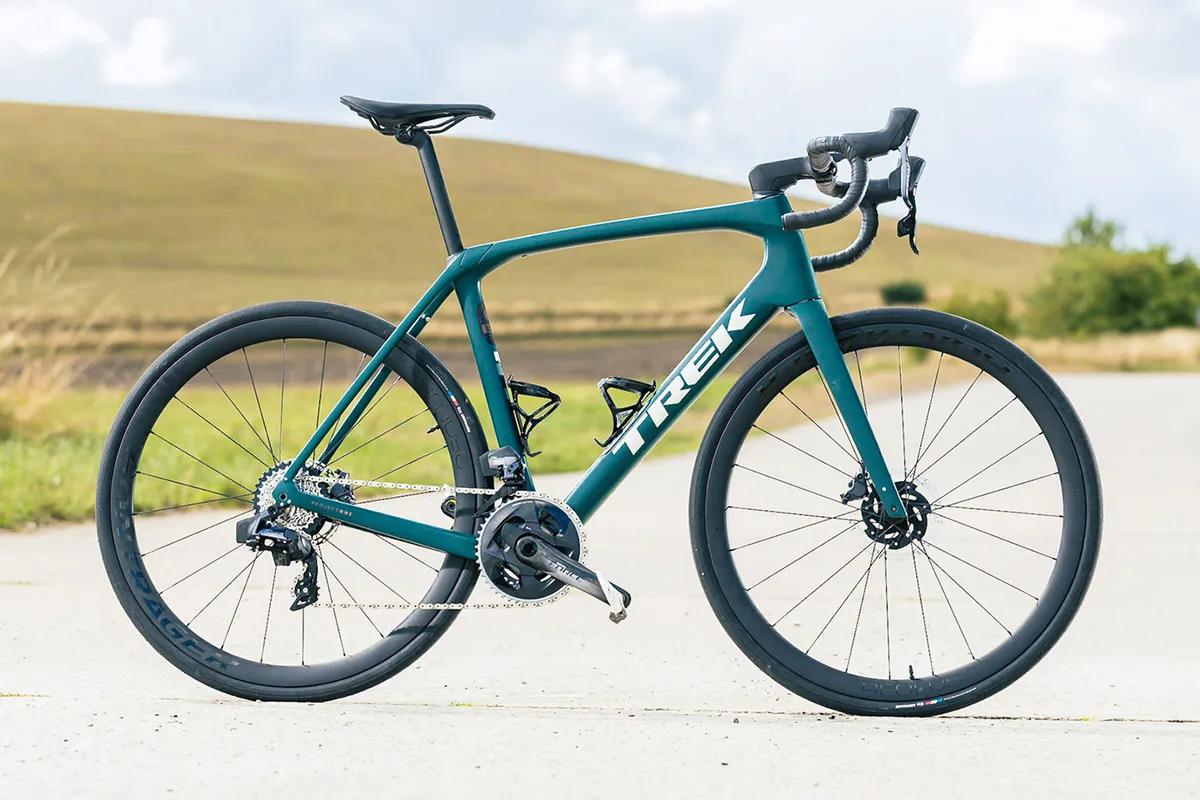
Warren Rossiter reckons there’s no need to worry about replacing the fork with a 40mm-offset in this instance.
Doing a bit of digging, the 2018 54cm Emonda has a 73-degree head tube angle and a standard 45mm offset. That gives you a 57mm trail measurement when running a 25mm tyre.
By changing to a fork with a 40mm offset, you’ll have a 62mm trail, which is more akin to an endurance bike such as the Trek Domane.
That move into endurance bike geometry isn’t necessarily a bad thing, seeing as you describe yourself as a recreational rider. You should expect the bike to feel more stable and less twitchy.

Onto the slammed-stem dilemma. Warren reckons the best option is opting for a handlebar with more rise – but you’ll struggle to find one with as much as 20mm. Some handlebars Warren suggests include:
- Specialized Hover Bar, which will give you 15mm of rise
- Vision Metron 4D – although the brand doesn’t quote a rise figure, Warren reckons it’s around 10mm and can vouch for its comfort and quality
- Profile Design DRV / GMR with 9mm rise and a bit of flare
- One of Ritchey’s Ergomax options with 10mm rise
- Genetic Driser 4 with 20mm rise and 40 degrees of flare
Oscar also suggests if you want to stick with the original fork, you could try to source one via a second-hand marketplace, such as eBay. You could also contact Trek Warranty. It’s not unheard of for warranty departments to have spare forks and you may have some luck.
Pedal threads
Theo Mulder asks…

Why do pedal threads have a right-hand thread on the right and left-hand thread on the left?
Bearings that fail with increasing friction will then tend to unscrew the pedal, which results in the sudden departure of the pedal from the crank. This has happened to me, but luckily when not really pedaling hard.
BikeRadar’s answer…
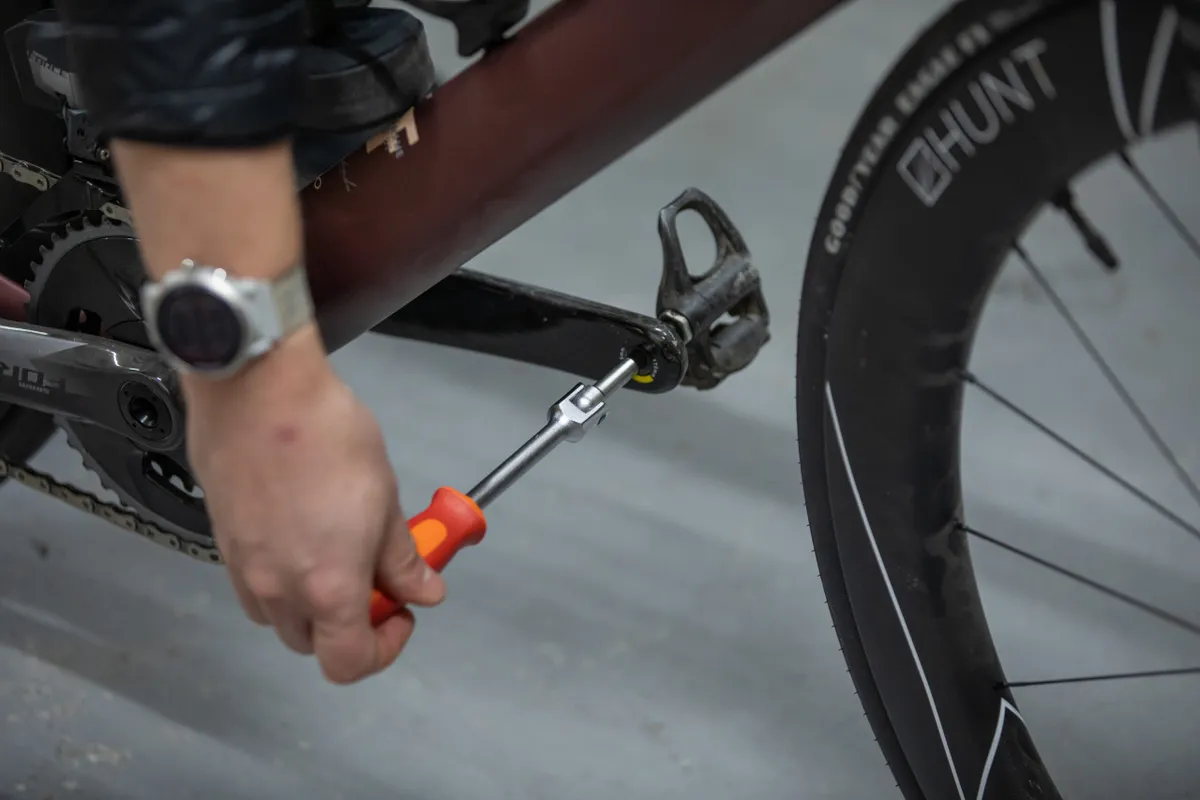
Oscar explains the Wright Brothers, aviation pioneers credited with inventing and flying the world's first successful aeroplane, claimed this invention in 1900.
Before their days in aviation though, they built bicycles. Originally, both pedals had standard right-hand threads and the left pedal would keep loosening.
As such, they decided to engineer a reverse-thread for the left pedal to combat this problem – and it’s a design and standard that’s stuck with bicycles ever since.
When you’re pedalling, the pedals effectively tighten. It’s worth maintaining your pedals and looking after your bearings to prevent this issue from happening.
SRAM UDH conversion
Bryn asks…
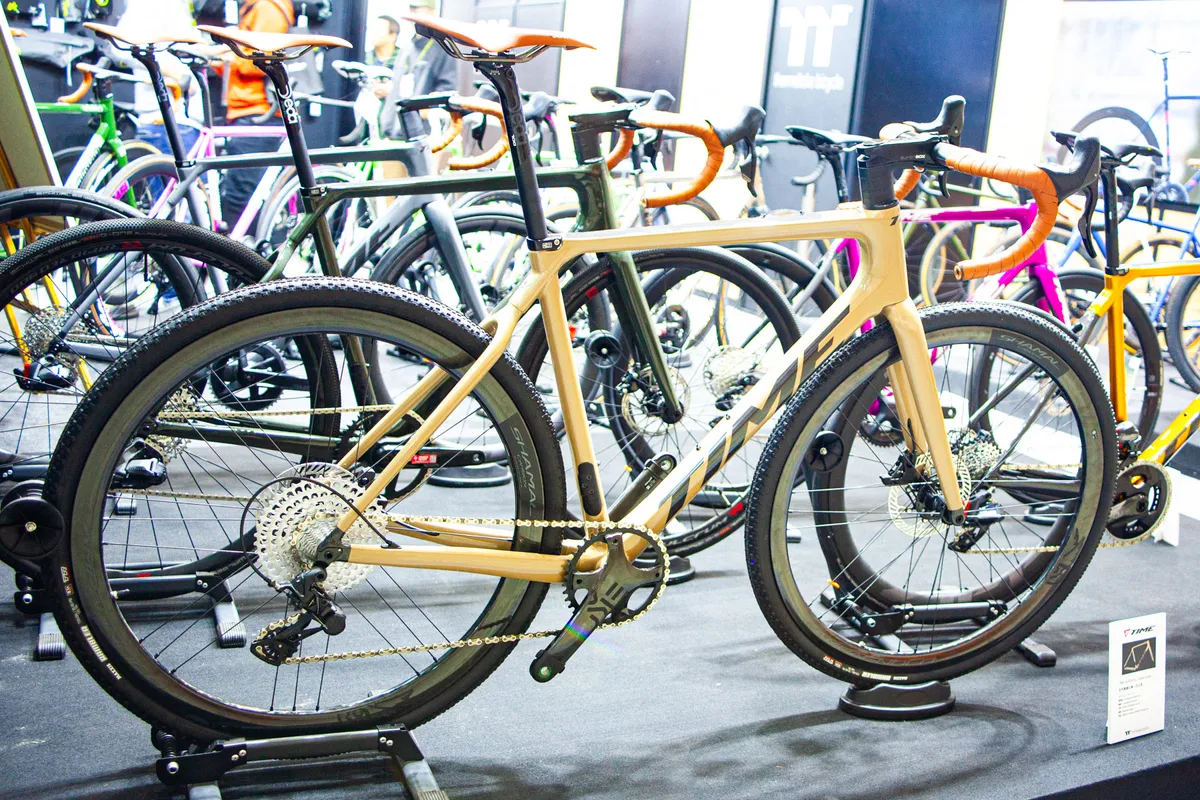
I recently bought a Time ADHX 45, which comes with a SRAM 1x12 XPLR groupset. The frame doesn’t have a SRAM UDH dropout.
Is there anything happening in the market that would allow non-UDH bikes to be essentially retro-fitted to allow the use of the new SRAM Red XPLR AXS groupset (that uses a direct-mount rear derailleur), which requires UDH.
Otherwise, cyclists in my position would only have the option of an entirely new bike purchase.
BikeRadar’s answer…

Oscar explains there isn’t currently a product on the market that can convert a dropout to SRAM UDH.
The UDH dropout is specific and enables SRAM to optimise the shifting performance, to the point where it has done away with the limit screws on its Transmission and Red XPLR AXS rear derailleurs.
The only example that currently comes to mind is the Norco Optic Gen 2, which launched initially with its own derailleur hanger, with the brand then retrofitting a SRAM UDH hanger later in its product cycle.
If you own a steel or titanium bike and want to run a direct-mount rear derailleur, you could look into getting your dropout replaced, but for all other materials, the answer is currently no.
It’s important to note we’re still in the early days of SRAM UDH’s lifespan and Warren says he wouldn’t be surprised if something comes along as a solution to this problem.
Shimano GRX
Steve Smith asks…
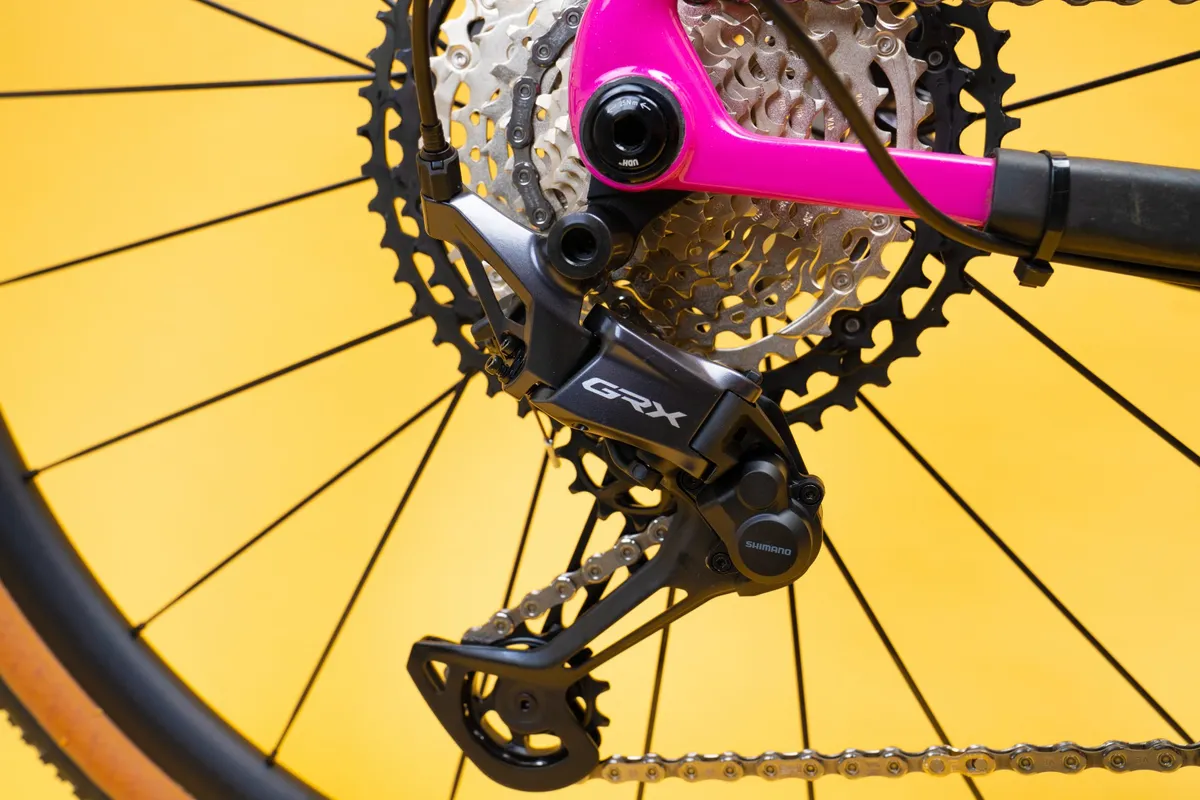
I’ve recently installed the new Shimano GRX mechanical 12-speed groupset on my Lynskey Cooper CX.
Everything is great, except the chain doesn’t want to stay on the 34-tooth cog, whether I’m on the big ring or the small ring.
Initially, when adjusting the shifting, the chain would shift onto the 34t and then fall down to the 32, on both the big and small chainrings. But the rear derailleur didn’t move all the way to the limit-screw stop, unless I held the shift lever, then it would.
I backed off the limit screw ever so slightly and it’s better, but not 100 per cent.
I can’t back the limit screw off anymore or I’m risking the chain jamming between the cassette and the hub. So I was curious if anyone has come across this issue before.
BikeRadar’s answer…
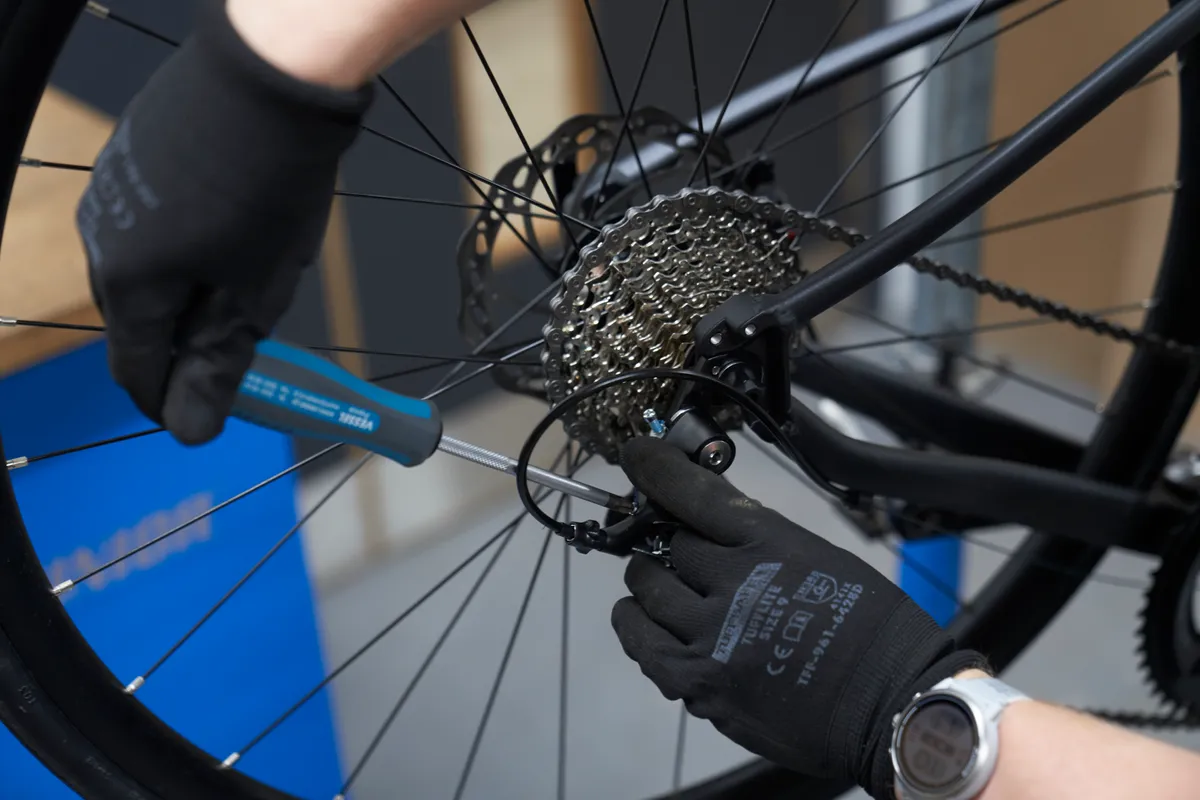
Oscar says the key thing to work out here is whether the problem is down to the limit screw or cable tension.
The fact that the derailleur moves all the way to the limit screw when you press the shifter suggests a cable-tension issue.
We’d first recommend disconnecting the cable and checking if the limit screw is set properly. Manually push the rear derailleur while pedalling to shift it up to the highest gear possible.
When the chain’s on the largest cog, there should be no jumping or clicking, nor should it overshift into the spokes.
If you’ve needed to loosen the limit screw slightly, that may well have sorted your problem.
Either way, once the limit screw’s set, reconnect the cable and re-check the indexing.
If you still have problems, we’d recommend contacting a retailer for a second opinion. It could also be a chainline issue.




